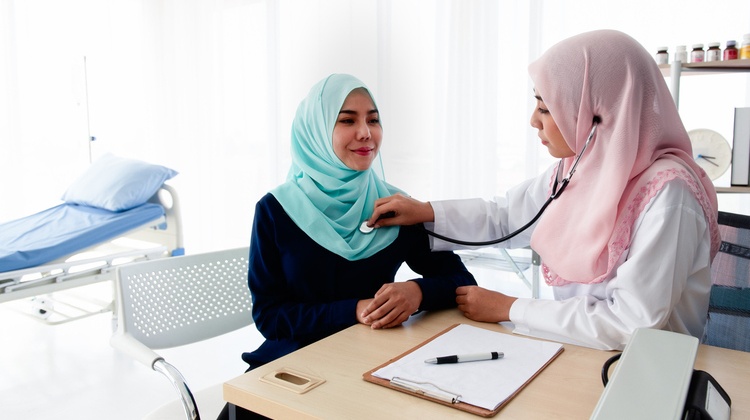Breast cancer in the family: risk factors and protection steps
Breast cancer occurs when there is uncontrolled tissue growth, leading to the development of lumps in the breast. This type of cancer can spread to other parts of the body, including the lymph nodes in the armpit or nearby areas
Breast cancer occurs when there is uncontrolled tissue growth, leading to the development of lumps in the breast. This type of cancer can spread to other parts of the body, including the lymph nodes in the armpit or nearby areas. Breast cancer does not discriminate by age or gender; the risk of breast cancer always exists among us. Let's delve deeper into the topic of breast cancer with this article.
Types of breast cancer
Breast cancer is a type of cancer that has a lot of varieties, and different characteristics bear different symptoms. There are few types of breast cancer that yield from the uncontrollable tissue growth such as:
- Localised cancer “Carcinoma in situ”
This cancer refers to an early stage of breast cancer. The cancer cells are localised to the area in which they grow, generally around the ducts or the mammary glands. In other words, carcinoma in situ cancer is at stage 0. - Ductal cancer “Ductal carcinoma in situ” (DCIS)
DCIS ductal cancer is a type of breast cancer that does not spread, typically known as a cancer that is naturally non-invasive and located around the milk ducts of the breast. This type of cancer is also classified as an early-stage breast cancer. Since it is non-invasive, this cancer has not spread to the mammary glands and has low potential to spread to other parts of the body. - Lobular cancer “Lobular carcinoma in situ” (LCIS)
From its “lobular” name (a condition that affects a specific organ’s microscopic unit known as lobule), this condition forms at the mammary glands but does not pass through the walls of the glands itself. This cancer is an abnormal phenomenon but classified as a condition that is not cancer, however, when diagnosed with LCIS, the chances of getting breast cancer is very high. - Invasive ductal cancer “invasive ductal carcinoma” (IDC) & Invasive lobular cancer “Invasive lobular carcinoma” (ILC)
IDC cancer is the most common type of cancer. It starts at the milk ducts, passes through the duct walls and spreads to the other breast tissues. ILC, however, is similar to IDC but it starts on the mammary glands and spreads to other parts.
Breast cancer risks

Breast cancer can develop from unavoidable factors such as age, gender or past history of breast cancer. Although it can develop in young women, if you are 50 years old and above, the risk of getting breast cancer is 8-10 times higher.
Preventive measure for breast cancer

Though breast cancer is unavoidable, we may still practise breast cancer protection steps to reduce the potential of developing the cancer. The following are breast cancer preventive measures that we can exercise:
- Exercise regularly
You don’t have to start with high intensity exercises. You just need to exercise according to your own ability and limit yourself to avoid any injury that may happen upon you. By exercising, you can avoid breast cancer factors such as being overweight and high levels of blood oestrogen. - Practise a healthy diet
You are advised to keep your diet on track by taking a balanced and healthy diet to reduce health problem risks that are at high potential of developing breast cancer. Practicing a healthy diet can balance your body weight and lead to decreasing the risk of breast cancer of being overweight. - Breastfeeding
Mothers who breastfeed their children can decrease the potential of breast cancer. This is due to the fact that when a mother breastfeeds, the mother experiences changes in her hormones that leads to a hindrance in their menstrual cycle, avoiding them to be exposed to hormones such as oestrogen.
The first thing one should do as a precautionary measure is by going through a breast cancer screening test. You can get free screening tests such as the Mammogram Subsidy Programme by the Ministry of Women, Family & Community Development at any health facilities provided by the government.
It is important for us to stay informed about the development and issues related to breast cancer, such as its symptoms, risk factors, and types so that we can take preventive measures. However, the amount of money you will end up spending might stack up really quickly, so it is recommended that you plan ahead to protect yourself from unwanted and unnecessary expenses by spending a lot of money for treatment and recovery costs if diagnosed with breast cancer.
